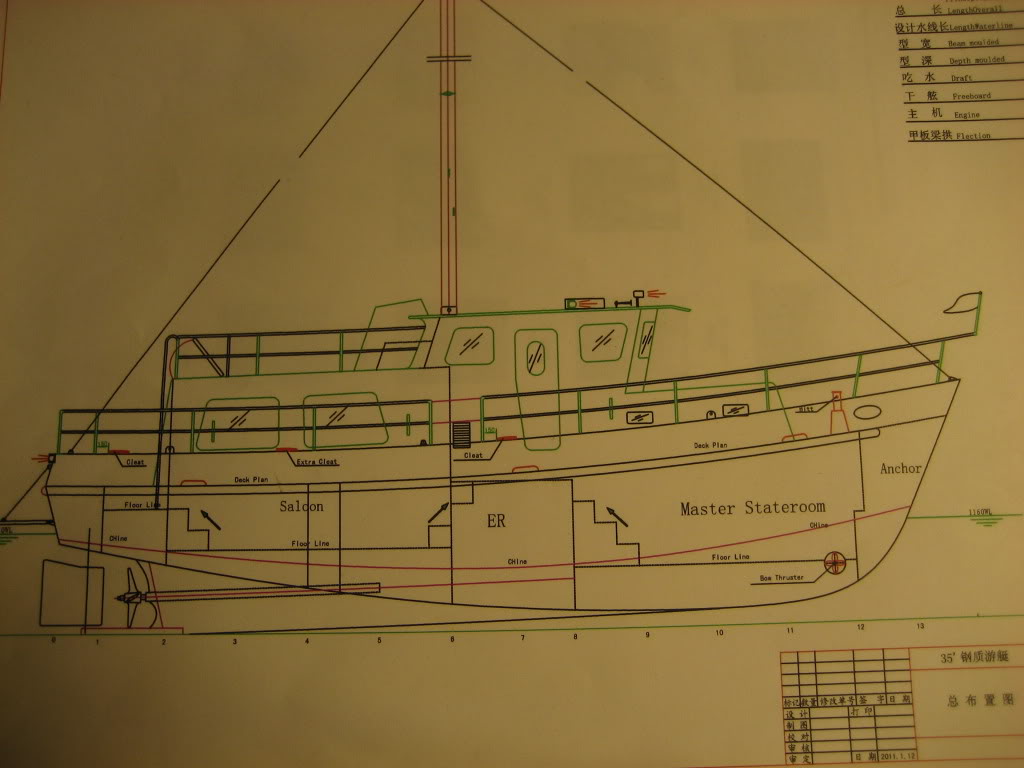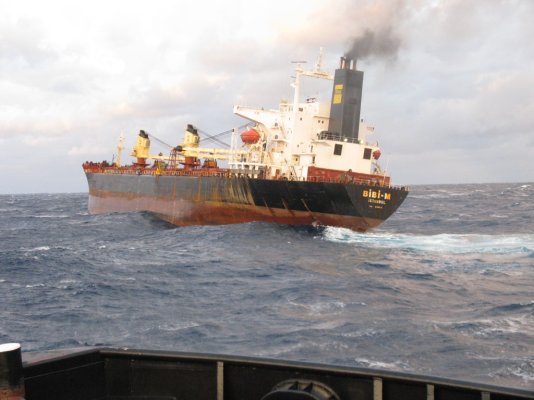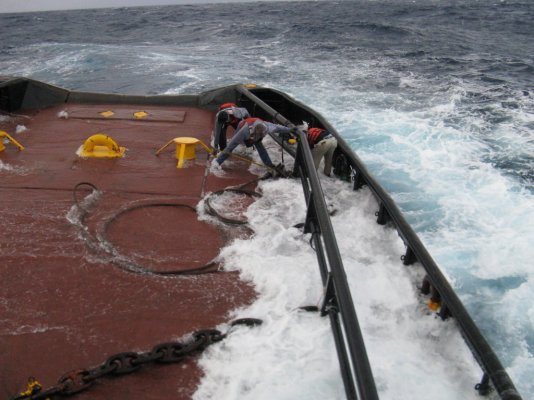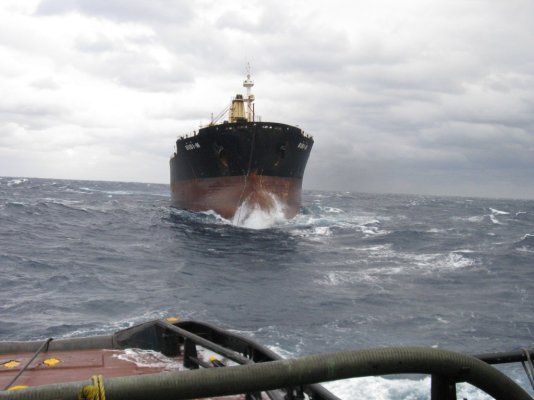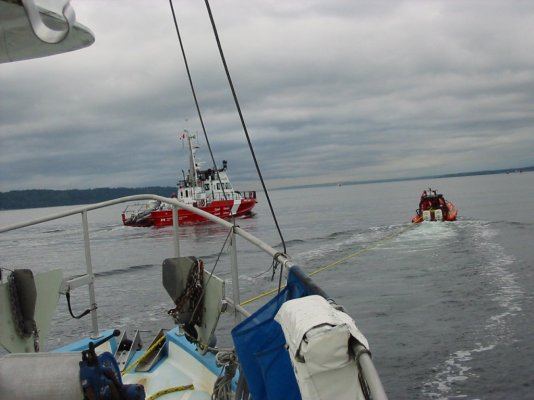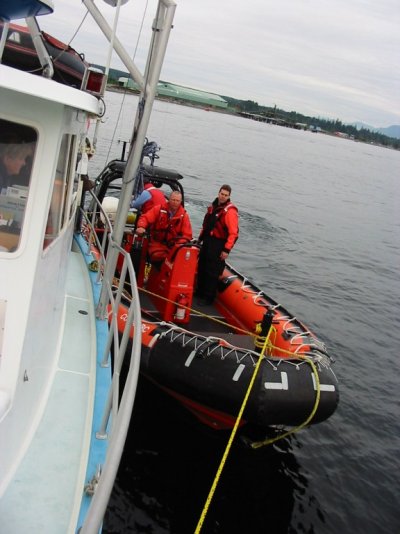If your boat needs to be towed in any sea , the usual deck hardware is not suitable
Your heaviest anchor line around the boat , held up by any deck hardware , with a few life preservers or other padding at the stern is the best most can do.
WE have a ,Lyle gun , a USN modified version of a 35mm flair gun , but locating the shot line is very difficult.
For those that dont know the term,,here's wikki
A line-throwing gun is a short-barreled cannon designed to fire a projectile attached to a rope to a boat or victim in distress. Experiments in shooting tethered projectiles dates back to around 1800. A mortar device was credited with saving lives as early 1850.
One of the first actions of Superintendent Sumner Increase Kimball, the only superintendent of the U.S. Life-Saving Service, was to find a better line-throwing device. Kimball realized he needed the best artillery expertise available, so he engaged the help of the Army Board of Ordnance and in 1877 they assigned David A. Lyle, Captain, U.S.A (18451937), a West Point and MIT graduate who began research and testing that resulted in reliable efficient designs. Lyle developed 3 bronze, smooth-bore guns of different sizes and the 2+12-inch-bore (64 mm) gun became the USLSS standard line-throwing gun.[1]
Projectiles for the gun were made of cast iron with a wrought iron eye bolt screwed into the base as an attachment point for the shot line. The projectile for the 2+12-inch (64 mm) gun was 15+34 inches (400 mm) long and weighed 19 pounds. It was placed into the 24-inch-long (610 mm) gun barrel so the eye bolt with the line attached was sticking out. After firing, the projectile rotated so that the eye bolt and line were trailing. The gun had a large recoil from firing. A standard charge of 1.5 ounces (43 g) of gunpowder would knock the gun back 6 feet (1.8 m). The maximum rescue charge of 8 ounces (230 g) would send the gun flying back even further.
The type of gunpowder used was also critical. It was a variation of black powder,uniform grain size, marketed as Hazards Life-Saving Service Powder and DuPont Life-Saving Powder.
Shotline was also just as critical to the accurate operation of the Lyle gun. Hemp line was found to be too brittle. Braided linen was usable, but it was too heavy with sea water after it was fired and had to be dried out before firing again. The best rope was waterproofed braided linen. It cut through the air best and provided improved range. New lines were too stiff and were difficult to properly flake (to wind in a pattern so the line could be shot without getting tangled), so a new rope needed to be fired several times to make it more flexible for faking. One of the critical drills of the U.S.L.S.S crew was faking the rope. If the first shot failed to go over the stranded ship, the rope would have to be hauled in, refaked, and shot again. An efficient faking crew could minimize the time required to get ready for the second shot. On average, a crewman with two assistants could fake 700 yards of line in about 25 minutes.
[edit] Operation
These line guns are used primarily for shore based rescue operations. The Lyle Gun was hauled to the shoreline usually by U.S.L.L.S. surfmen in specially made beach carts. The iron wheels that supported the cart had wide bands outside the wheel to keep it from sinking into soft sand.
The Surfmen would set up and fire the Lyle gun, aiming over the stranded or wreaked vessel and then pull the line within reach of the victims. The line fired to the ship in distress was a messenger line that was in turn tied to a heavier line, the Tally Board (with instruction in English and French), and a Tail block designed to support the breeches buoy. Once the breeches buoy lines and the Crotch Pole(an A frame) assembled, the survivors could be removed from the vessel by hand hauling the breeches buoy lines.
The Lyle Gun could shoot the projectile about 700 yards (640 m), although in actual rescues the practical range was much less.[1] Rescues at greater distances were to be accomplished by lifeboats.
[edit] Manufacturers
There were about 30 companies who made line-throwing guns from the late 19th century to 1952. Famous names included American Manufacturing, Galbraith, General Ordnance, Naval Company, Sculler and Steward. Production of Lyle Gun's ceased in 1952 in favor of line-throwing rockets.
